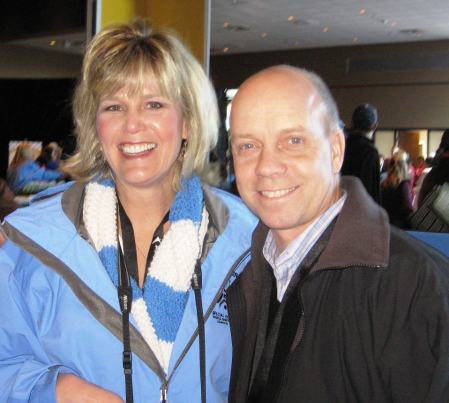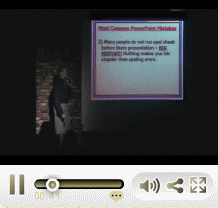I am currently flying high over Kansas City on my way back to Boston from San Francisco. Irwin Hipsman and I spent the past 3 days visiting clients and partners like Kaiser Permanente, Schwab, Franklin Templeton, VeriSign, Salesforce.com, Intercall and Premiere Global among others. We conducted a couple of Customer Success Forums among our meetings and had several opportunities to discuss Presentation Best Practices. From a high level, users were interested in how to make presentations more appealing and more interactive to increase viewing and knowledge transfer. I know that what they were referring to was the use of animations, questions and video. However, a presentation is appealing only in part because of the use of these design elements. Instead of discussing the ground level design elements lets talk about the high level appeal of a presentation to an audience and how we can achieve this level of success.
The key to making presentations more appealing is to think from the point of view of the audience.
In the Communication Strategy Best Practices delivered by our CSC’s, the first step to success is to know and Specify the Objective of the communication; this is your objective. The second step is to Understand your Audience in other words what is their objective. Understanding, who your audience is, how they behave and what is important to them should be the guiding light to the presentation that you develop and distribute to them. Whether your goal is to generate leads, shorten sales cycles, increase benefit enrollment, prepare the channel for a new product or certify a user population probably does not matter to the viewer. Your goal then is to find out what does matter to the viewer.
If you make sure that every slide, every image, every bullet, every recorded sentence, every attachment, every video and every question provides value to the viewer, then your viewing rates and statistics will be through the clouds. For every piece of content that you put on the slide or record on the slide ask yourself this question – What is the value this piece of content brings to the viewer? If you cannot answer that question definitively for each content element then I suggest you leave it out of the presentation and your audience will appreciate that you have sent them a concise communication.
If you are looking for appeal – bring value.
Thank you for visiting and have a Sharktastic Day!






 <
<
